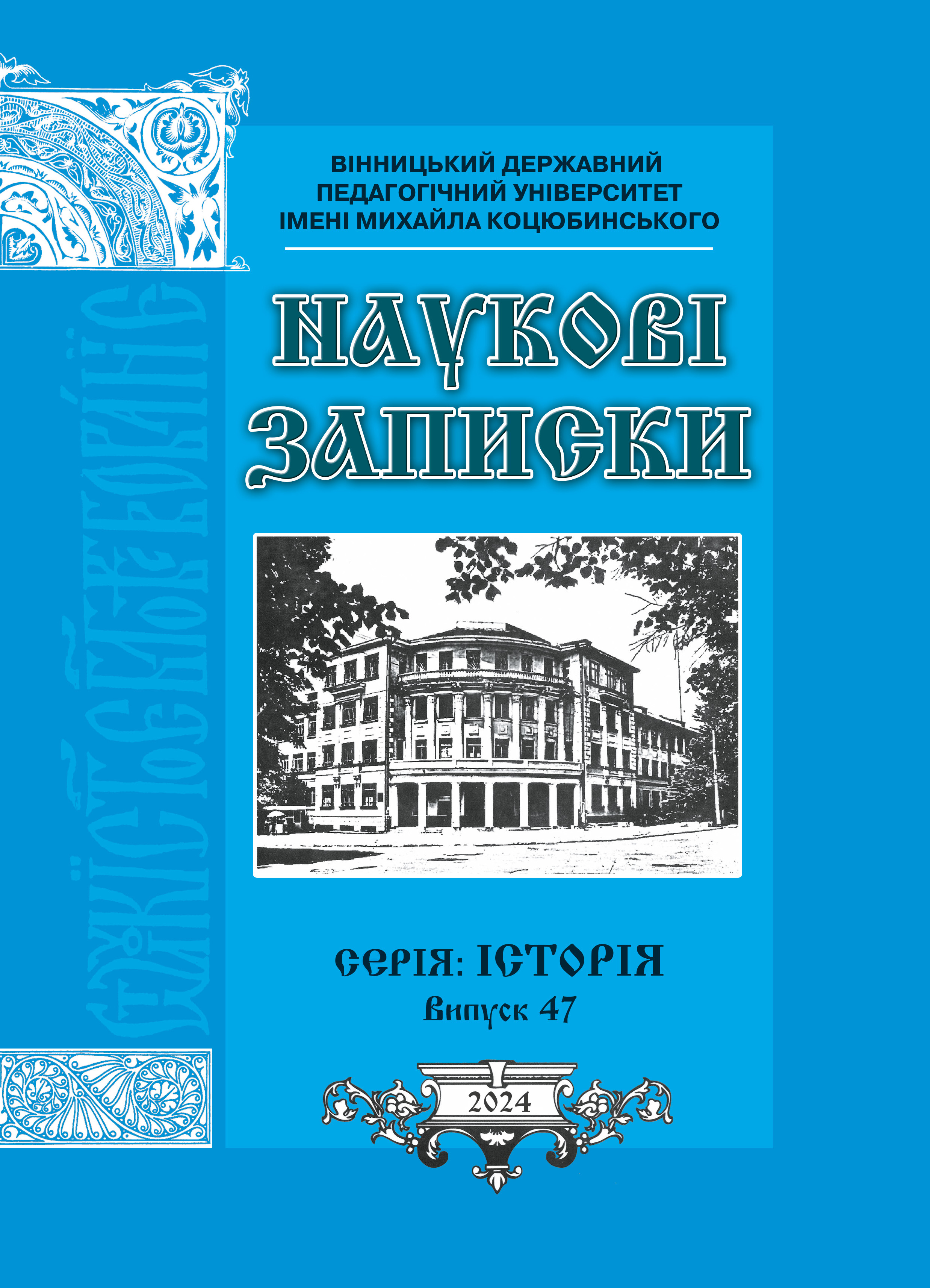Abstract
The purpose of the article is to study the organization and activities of professional associations of Lviv architects and sculptors, known in the sources as "factory(fabryky)-workshops", during the construction and sculptural decoration of sacred and secular buildings in Lviv and outside its borders in the 1730-s – 1760-s. The methodology of the research is based on the principle of objectivity and historicism, a systematic approach to the study of historical-artistic and socio-economic phenomena in their development and interrelationships. The use of methods of analysis and synthesis, problem-thematic, descriptive and historical-chronological approach made it possible to optimally solve the research task. The scientific novelty of the research involves the description of the activity and internal organization of the factory-workshops of Lviv architects and sculptors during the construction and sculptural decoration of objects of a secular and sacred nature, the importance of the factory-workshops of Lviv artists in obtaining profitable orders, as well as in confrontation with the city corporation. Conclusions. In the professional activity of Lviv architects and sculptors, a significant role was played by the process of organizing the most qualified workers around them into professional associations, which are known in the sources as "factory-workshops". Thanks to them, artists got the opportunity to control most of the orders when creating objects of a secular and sacred nature in the city and beyond. This, in turn, caused a confrontation with the city corporation. Free craftsmen managed to win a number of victories over the corporation on a legal basis thanks to the support of influential patrons, magnate families, representatives of the higher clergy, as well as royal privileges that exempted artists from the claims of the corporation and city authorities.
References
Betlej, A. (1998). Kilka uwag na temat twórczości Francisca Ksawerego Kulczyckiego i architektury lwowskiej 2. połowy w. XVIII. Sztuka kresów wschodnich. Materiały sesji naukowej. Kraków, październik 1996. (T. 3), 171–193.
Dutkiewicz, J. (1939). Fabryka cerkwi Wniebowzięcia NMP w Poczajowie. Dawna Sztuka. (Z. 2), 131–165.
Hornung, Z. (1976). Majster Pinsel snycerz. Karta z dziejów polskiej rzeźby rokokowej. Wrocławskie towarzystwo naukowe. Rozprawy komisji historii sztuki. (T. X.), 194 s.
Kowalczuk, M. (1927). Cech budowniczy we Lwowie za czasów polskich (do 1772), 89 s.
Krasny, P. (1994). Bernard Meretyn i problem rokoka w architekturze polskiej. Praca doktorska pisana pod kierónkiem Prof. Dra. hab. Jana Ostrowskiego. Kraków.
Mańkowski, T. (1928). Katedra św. Jana we Lwowie. Spawozdania Towarzystwa Naukowego we Lwowie. (R. 8), 74–79.
Mańkowski, T. (1932). Lwowskie kościoły barokowe. Prace sekcyi historyi sztuki i kultury Towarzystwa Nauk we Lwowie. (T. 2), (Zesz. 2), 97–249.
Mańkowski, T. (1946). Fabrica ecclesiae. 53 s.
Mańkowski, T. (1974). Dawny Lwów – jego sztuka i kultura artystyczna. 422 s.
Ostrowski, J. (1996). Jan Jerzy Pinsel – zamiast biografii. Sztuka kresów wschodnich. Materiały sesji naukowej. Kraków, maj 1995. (T. 2), 361-373.
Wujcyk, W. (1998). Architekt lwowski Franciszek Ksawery Kulczycki (na podstawie badań archiwalnych). Sztuka kresów wschodnich. Materiały sesji naukowej. Kraków, październik 1996. (T. 3), 153-171.
Александрович, В. С. (2000). Три документи до історії львівської скульптури 1730-х рр. Ковчег. Науковий збірник із церковної історії. (2), 339-346.
Александрович, В. С. (2012). Львівське середовище скульпторів європейської традиції першої половини XVIII ст. Львівська національна галерея мистецтв. Дослідження і матеріали. Науковий збірник. (3), 13-43.
Александрович, В. С., & Ричков, П. А. (2008). Собор святого Юра у Львові. Київ: Техніка, 232 c.
Вуйцик, В. С. (2001). Будівельний рух у Львові другої половини XVIII століття. Записки Наукового товариства імені Т. Шевченка, (CCXLI). Праці Комісії архітектури та містобудування, 113-126.
Вуйцик, В. С. (2001). Нові штрихи до творчої біографії Бернарда Меретина. Записки Наукового товариства імені Т. Шевченка, (CCXLI). Праці Комісії архітектури та містобудування, 517-523.
Лильо, О. М. (2001). Цехова книга львівських столярів 1721-1745 рр. як джерело до історії скульптурного середовища міста. Наукові зошити історичного факультету Львівського національного університету ім. І. Франка. Збірник наукових праць. (4), 83–90.
Лильо, О. М. (2005). Львівське середовище архітекторів 30—70-х років XVIII ст. Вісник Львівського університету. Серія мистецтвознавство. (5), 160–179.
Лильо, О. М. (2014). Діяльність будівничих Львова першої половини XVIII ст. в контексті європейських звя’язків: особливості формування і розбудови. https://artes-almanac.com/dialnist-budivnychykh-lvova-ppol18st/
Лильо, О. М. (2014). Львівське середовище скульпторів XVIII ст. Військово-науковий вісник. (20), 57–71.
Лильо, О. М. (2017). Повсякденне життя та професійна діяльність скульпторів Львова другої половини XVIII ст. Український історичний журнал, (2), 33–45.
Цапенко, М. П., & Юрченко, П. Г. (1968). Архітектура. Історія українського мистецтва (у 6 т., Т. 3.). Мистецтво другої половини XVII-XVIII століття. Київ, 70–125.
ЦДІА України у Львові – Центральний державний історичний архів України у Львові.

This work is licensed under a Creative Commons Attribution 4.0 International License.
Copyright (c) 2024 Orest Lylio





